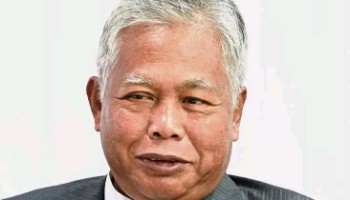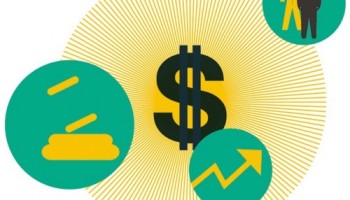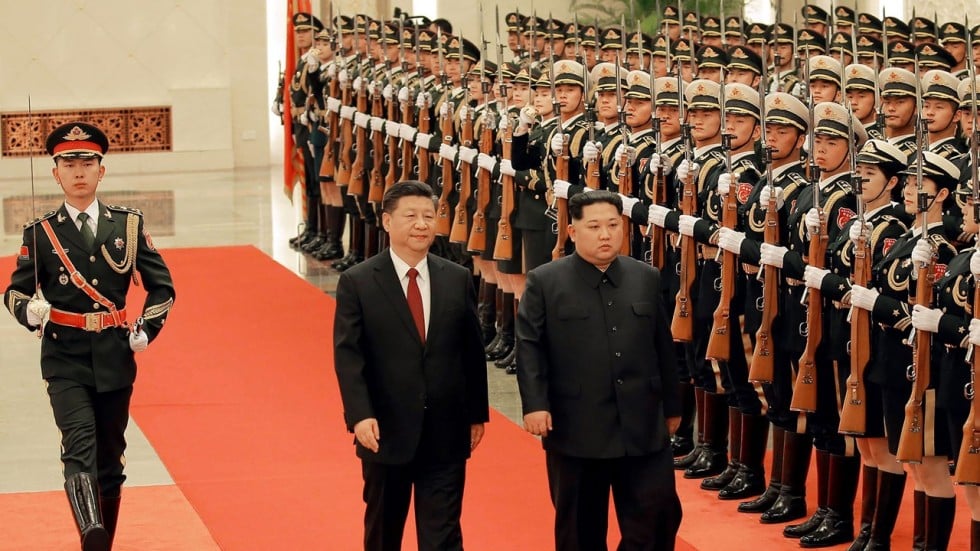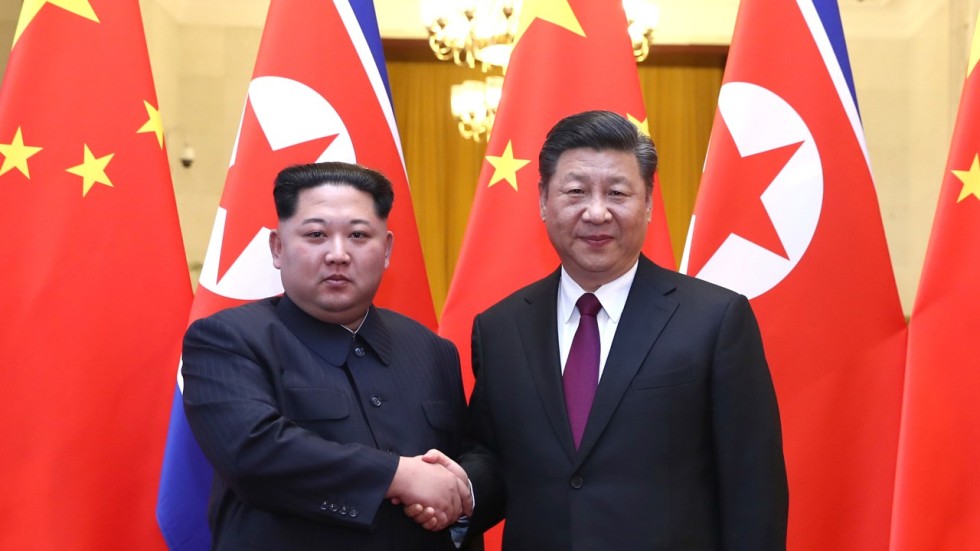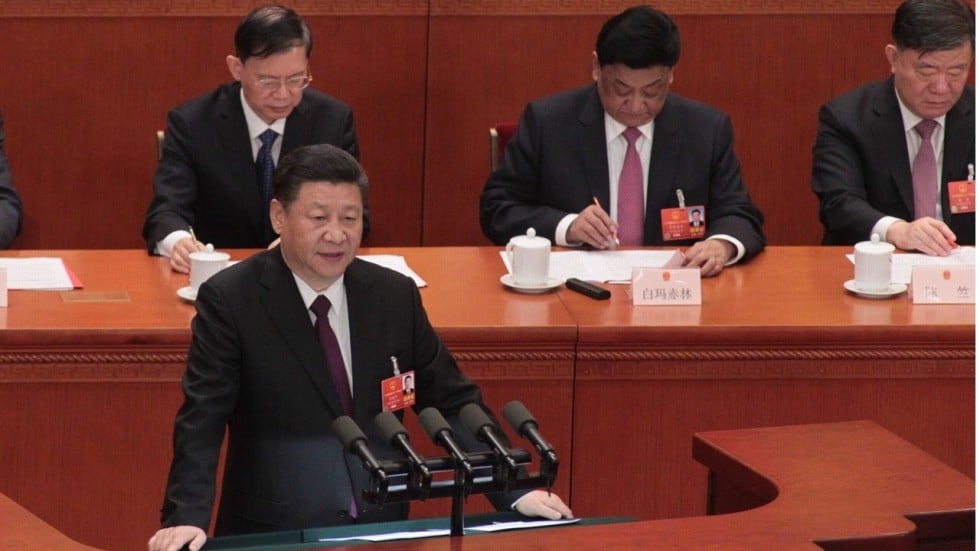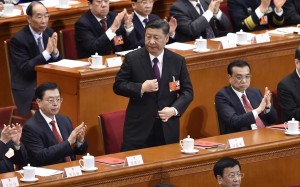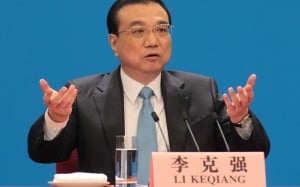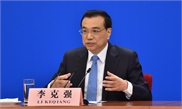Most workers not paid enough to achieve minimum acceptable living standard

Wages too low, says Bank Negara - Survey: most workers not paid enough to achieve minimum acceptable living standard
ALTHOUGH the income levels of Malaysians have increased significantly over the years, voices of discontent are mounting over the decline in purchasing power.
Low and depressed salaries are among the grouses of executives and non-executives amid the apparent lifestyle changes of Malaysians.
With the rising cost of living, they lament that there is now less room for long-term savings and investments.
According to the Employees Job Happiness Index 2017 survey by JobStreet.com, one in three Malaysian employees want a pay rise, with rewards constituting 52% of the domestic workforce’s motivation to work.
In its 2017 Annual Report, Bank Negara points out that the expenditure of the bottom 40% (B40) of Malaysian households has expanded at a faster pace compared with their income.
From 2014 to 2016, the average B40 income level grew by 5.8% annually, marginally lower than the 6% growth in the B40 household spending in the same period.
It is also worth noting that half of working Malaysians only earned less than the national median of RM1,703 in 2016.
The central bank, in consideration of the low-wage conundrum, has recently recommended that employers use a “living wage” as a guideline to compensate their employees for their labour.
Essentially, the living wage refers to the income level needed to achieve a minimum acceptable standard of living, depending on the geographical location.
Citing Kuala Lumpur as an example, Bank Negara estimates that the living wage in the city two years ago was about RM2,700 for a single adult. The living wage estimate for a couple without a child was RM4,500, while for a couple with two children, the living wage was RM6,500.
As much as Malaysians support higher wages, which can outgrow escalating living cost, the bigger question is whether their employers are willing to increase wages significantly.
Also, is it realistic for employers to pay higher salaries in line with the suggested living wage?
Speaking to StarBizWeek, Malaysian Employers Federation (MEF) executive director Datuk Shamsuddin Bardan says that the living wage is unsuitable for adoption in Malaysia – for now.
He believes that the living wage will turn out to be damaging to the domestic labour market, given the rising cost of doing business in recent times.
 << Shamsuddin: While employers in Malaysia are more than happy to compensate workers for their work, people must also understand that they are bogged down by escalating costs.
Shamsuddin: While employers in Malaysia are more than happy to compensate workers for their work, people must also understand that they are bogged down by escalating costs.
<< Shamsuddin: While employers in Malaysia are more than happy to compensate workers for their work, people must also understand that they are bogged down by escalating costs.
Shamsuddin: While employers in Malaysia are more than happy to compensate workers for their work, people must also understand that they are bogged down by escalating costs.“The living wage concept is unrealistic in Malaysia for the time being. While employers in Malaysia are more than happy to compensate workers for their work, people must also understand that they are bogged down by escalating costs.
“However, if the workers are proactive and upskill themselves to increase their productivity, then I do not see any reason for employers to refrain from offering higher pay packages.
“The Government on its part, should not micro-manage the economy to the extent of telling the employers how much to pay their workers. Instead, the Government can provide various incentives to the employers to bring down costs, which will translate into higher salaries or even exempt the employees’ bonuses from tax,” he says.
Socio Economic Research Centre executive director Lee Heng Guie welcomes Bank Negara’s living wage guideline “to prevent a wage employee from the deprivation of a decent standard of living”.
In order to push for the acceptance of a living wage in Malaysia, Lee recommends that government-linked companies (GLCs) adopt the concept gradually.
“The enforcement of commitments toward the living wage is a complex and costly issue, and more importantly, should be paid voluntarily by the employers.
“This would require extensive consultations and engagements with the stakeholders.
“Perhaps, as one of the largest employers in the country, GLCs can incorporate the living wage clause in their suppliers’ procurement contracts,” he says.
Concerns about Malaysia’s low-wage environment are not only centred on the low-skilled workers but across-the-board, as even executives lament about being lowly-compensated.
Are Malaysians being paid enough?
Based on data from the Statistics Department’s Salaries and Wages Survey Report 2016, most Malaysian workers are still paid significantly lower than the desired amount to achieve “minimum acceptable living standard”, at least in Kuala Lumpur.
Nearly 50% of working adults in Kuala Lumpur earned less than RM2,500 per month in 2016, notably lower than the RM2,700 living wage as suggested by Bank Negara.
In fact, up to 27% of households in Kuala Lumpur earned below the estimated living wage in 2016.
While wage growth has exceeded inflation over the years, real wage growth has been largely subtle. Real wage refers to income adjusted for inflation.
According to the MEF’s website, the salaries of executives were expected to grow by 5.55% in 2017, compared with 6.31% in 2013. As for non-executives, the average salary was anticipated to increase by 5.44% in 2017, down from 6.78% in 2013.
Given the 3.7% headline inflation registered in 2017, executives’ salaries may have just inched up by 1.85% on average, after factoring in inflation.
As for non-executives, their real wage could have grown by 1.74%, lesser than the executives in Malaysia.
While a slight moderation in headline inflation is expected this year, the purchasing power of Malaysians is unlikely to improve significantly.
In an earlier report by StarBiz, Shamsuddin described 2018 as a “bad year for employees and employers”, and projected Malaysians’ average salary increment to be lower than last year.
He blamed several new policies and measures introduced by the government such as the mandatory requirement for employers to defray levy for their foreign workers and the introduction of the Employment Insurance System, which would increase the costs borne by domestic businesses.
“It will be difficult for employers to raise salaries after this, given such dampeners,” he was reported as saying. The biggest challenge now is to strike a balance between the market’s ability to compensate a worker and the worker’s required income level to achieve a minimum acceptable standard of living.
Sunway University Business School professor of economics Yeah Kim Leng says that more efforts have to be made to enhance the business and investment climate, in order to entice existing firms to expand and upgrade while new firms and start-ups emerge to create more high-paying jobs.
 << Yeah: A good quality and inclusive education system coupled with sound economic policies and effective implementation have enabled the two countries to sustain growth.
Yeah: A good quality and inclusive education system coupled with sound economic policies and effective implementation have enabled the two countries to sustain growth.
<< Yeah: A good quality and inclusive education system coupled with sound economic policies and effective implementation have enabled the two countries to sustain growth.
Yeah: A good quality and inclusive education system coupled with sound economic policies and effective implementation have enabled the two countries to sustain growth.He also calls upon business owners and employees to forge appropriate wage-setting mechanisms, which are benchmarked against the productivity of the workers.
“The Government should consider additional fiscal incentives for firms that provide worker benefits to meet the living wage standard. For example, double tax deduction for transport allowance and other cost of living adjustments for the lower-salaried employees,” states Yeah.
Meanwhile, Lee opines that employees should be given a higher share of the profit generated by their employers moving forward, in line with the practice in many high-income nations abroad.
“It is actually reasonable for Malaysian employers to allocate a larger chunk of their profits to reward their workers and motivate them,” he says.
In 2016, the compensation of employees to gross domestic product (CE-to-GDP) ratio in Malaysia improved to 35.3%. The CE-to-GDP ratio shows the workers’ share in the profits made by business owners.
For every RM1 generated in 2016, 35.3 sen was paid to the employee and 59.5 sen went to corporate earnings, while five sen was given to the government in the form of taxes.
In its 11th Malaysia Plan, the Government aspires to increase the CE-to-GDP ratio substantially to 40%, from 34% in 2013.
While Malaysia’s CE-to-GDP ratio has continued to improve over the years, it is notably lower than several other high and middle-income countries.
The 11th Malaysia Plan document stated that the country’s CE-to-GDP ratio was lower than Australia (47.8%), South Korea (43.2%) and even South Africa (45.9%).
In an earlier media report, however, Malaysian Institute of Economic Research executive director Zakariah Abdul Rashid hinted that Malaysia was unlikely to reach its CE-to-GDP ratio target by 2020.
This was mainly as a result of Malaysia’s lower-than-expected productivity growth.

Low-wage conundrum
According to Bank Negara, the main underlying cause of Malaysia’s low-wage environment is the high numbers of cheap foreign workers.
Governor Tan Sri Muhammad Ibrahim says that the country should cut back on its foreign worker dependency to drive higher wages for Malaysians across-the-board.
“In Malaysia, our salaries and wages are low, as half of the working Malaysians earn less than RM1,700 per month and the average starting salary of a diploma graduate is only about RM350 above the minimum wage.
“It is high time to reform our labour market by creating high-quality, good-paying jobs for Malaysians,” he says.
Echoing a similar stance, Yeah says that the continuing reliance on foreign workers has resulted in a predominantly low wage-low productivity-low value economy, with many features of a middle-income trap.
“On one end of the wage-skill spectrum, the low-skilled jobs are being substituted by easy availability of unskilled foreign workers, thereby keeping the blue-collar wages from rising.
“At the other end, skilled job wages are being depressed by insufficient high-wage job creation, weak firm profitability amid rising market competition and excess capacity, industry consolidations and other factors resulting in a slack labour market,” he says.
 << Lee: The enforcement of commitments toward the living wage is a complex and costly issue, and more importantly, should be paid voluntarily by the employers.
Lee: The enforcement of commitments toward the living wage is a complex and costly issue, and more importantly, should be paid voluntarily by the employers.
<< Lee: The enforcement of commitments toward the living wage is a complex and costly issue, and more importantly, should be paid voluntarily by the employers.
Lee: The enforcement of commitments toward the living wage is a complex and costly issue, and more importantly, should be paid voluntarily by the employers.It is worth noting that the share of high-skilled jobs has reduced to 37% in the period from 2011 to 2017, as compared to 45% from 2002 to 2010.
Malaysia has come a long way since its independence, transforming itself from a largely rural agragrian country to a regional economic powerhouse, which is driven by its strong services and manufacturing sectors.
While industrialisation and automation have grown robustly since the 1990s, economists feel that the country has not managed to substantially move up the value chain compared with other countries such as Singapore.
The lack of a high-skilled workforce, low productivity, employment opportunities to cater to high-skilled professionals and the presence of cheap foreign workers have all weighed down on the Malaysian economy, particularly the income levels of Malaysians.
Citing the examples of Singapore and Australia, which are successful in raising wages historically, Yeah says that structural reforms should be undertaken in Malaysia to reverse the low-wage conundrum.
“A good quality and inclusive education system coupled with sound economic policies and effective implementation have enabled the two countries to sustain growth, raise productivity and wages and shift to higher-value activities,” he says.
Sources: by Ganeshwaran Kana, The Star
Economist: Manage labour issues to achieve high-income economy
 |
Cheap manpower: While Malaysia has clearly
benefitted from the presence of foreign workers, the role that foreign
workers play in the Malaysian economy must keep up with the times.
|
WHY are wages still low in Malaysia?
Well, there are six words to describe the main reason for this – “high dependence on low-skilled foreign workers”.
The issue of Malaysia’s huge reliance on low-skilled foreign labour has been raised time and again, but only moderate progress has been made in alleviating the situation.
Low-skilled foreign labour remains a prevalent feature of Malaysia’s economy, and according to Bank Negara, it is a major factor suppressing local wages and impeding the country’s progress towards a high-productivity nation.
As the central bank governor Tan Sri Muhammad Ibrahim puts it, Malaysia is currently weighed down by a low-wage, low-productivity trap, with the contributing factor being the prolonged reliance on low-skilled foreign workers.
While their existence may benefit individual firms in the short term, they could impose high macroeconomic costs to the economy over the longer term.
“Easy availability of cheap low-skilled foreign workers blunts the need for productivity improvement and automation. Employers keep wages low to maintain margins,” Muhammad says.
“Unfortunately, this depresses wages for local workers. The hiring of low-skilled foreign workers also promotes the creation of low-skilled jobs,” he adds.
From 2011 to 2017, the share of low-skilled jobs in Malaysia increased significantly to 16%, compared with only 8% in the period of 2002 to 2010. Apart from that, local economic sectors that rely on foreign workers such as agriculture, construction and manufacturing also suffer from low productivity.
Nevertheless, it is an undeniable fact that foreign workers do contribute somewhat to Malaysia’s economic growth.
The World Bank, in its study about three years ago noted that immigrant labour both high and low-skilled, continued to play a crucial role in Malaysia’s economic development, and would still be needed for the country to achieve high-income status by 2020.
The global institution’s econometric modeling suggested that a 10% net increase in low-skilled foreign workers could increase Malaysia’s gross domestic product (GDP) by as much as 1.1%. For every 10 new immigrant workers in a given state and sector, up to five new jobs may be created for Malaysians in that state and sector, it said.
Even so, the World Bank acknowledged that the influx of foreign labour did have a negative impact on the wages of some groups.
Its study found a 10% increase in immigration flow would reduce wages of the least-educated Malaysians, which represents 14% of the total labour force, by 0.74%. Overall, a 10% increase in immigration flow would slightly increase the wages of Malaysians by 0.14%.
According to Muhammad, while some argue that foreign employment creates economic activities, which consequently create jobs for local employment, it is neither the most efficient nor the desired route to create more mid-to-high-skilled jobs.
“Compared with local employment, foreign workers repatriate a large share of their incomes, which limits the spillover or multiplier effect on the domestic economy,” he explains.
Total outward remittances in 2017 stood at RM35.3bil, of which the bulk was accounted for by foreign workers.
In addition, Muhammad says high dependence on low-skilled foreign workers will also have an adverse effect of shaping Malaysia’s reputation as a low-skilled, labour-intensive destination.
Bank Negara says while Malaysia has clearly benefitted from the presence of foreign workers, the role that foreign workers play in the Malaysian economy must keep up with the times.
The central bank believes critical reforms to the country’s labour market are very much within its reach, and it should continue to gradually wean its dependence on foreign workers.
Malaysia should seize the opportunity now to set itself on a more productive, sophisticated and sustainable economic growth path, it says.
According to Muhammad, cutting back on foreign worker dependency can help to drive higher wages for Malaysians across-the-board.
The Government’s efforts in reducing the country’s dependency on low-skilled foreign workers have been ongoing since the implementation of the 8th Malaysia Plan (2001-2005), with greater clarity and a renewed focus to resolve the issue at hand upon the implementation of the 11th Malaysia Plan.
This has resulted in the steady decline in the share of documented foreign workers from 16.1% in 2013 to 12.0% of the labour force in 2017.
More can be done to build on the progress made, Bank Negara says, while proposing a five-pronged approach to managing foreign workers in Malaysia.
Firstly, it says, there must be a clear stance on the role of low-skilled foreign workers in Malaysia’s economic narrative. Secondly, policy implementation and changes must be gradual and clearly communicated to the industry.
Thirdly, existing demand-management tools (such as quotas, dependency ceilings and levies) can be reformed to be more market-driven, while incentivising the outcomes that are in line with Malaysia’s economic objectives.
Fourthly, there is room to ensure better treatment of foreign workers, be it improvements in working conditions or ensuring that foreign workers are paid as agreed. Lastly, it is also important to note that the proposed reforms must be complemented with effective monitoring and enforcement on the ground, particularly with respect to undocumented foreign workers.
An economist tells StarBizWeek that addressing the high reliance on foreign workers is pertinent for Malaysia’s transition into a high-income economy. “Malaysia needs to shift its focus from importing cheap labour to managing labour flow that can maximise growth and facilitate its structural adjustment towards a higher income economy,” he says.
“It has been far too long for our economy to be swamped with foreign workers who are unskilled, or have low skill sets that could not contribute meaningfully to Malaysia’s aspiration of becoming a high-income economy,” he adds.
By Cecilia Kok, The Star
Related:
'Urgent need for coordinated action' - TheWorldNews.net
Bank Negara refutes report on living wage - Business News
Related posts:
Malaysia needs structural reforms says global investor
Arrest decline in productivity and competitiveness in Malaysia
Corruptions, Conflict of interests, politicians and Malaysian bloated civil service
Structural issues including education are holding Malaysia back
Huge Civil Service Size, Attractive Emoluments and Benefits are costing Malaysia !
Prized job: While long-term security like the pension scheme free
healthcare and easy loans have been among the perks of joining the ...
Bloated civil sevice in Malaysia must cut down the size and salaries
Call on the Government to downsize the country’s bloated civil service
Ministers may face conflict of interest,
says Tunku Abdul Aziz: "If you have no power, you cannot abuse it.
Civil servants hav...



